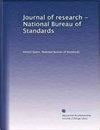Prospects for Trace Analysis in the Analytical Electron Microscope
Journal of research of the National Bureau of Standards
Pub Date : 1988-05-01
DOI:10.6028/jres.093.081
引用次数: 1
Abstract
The analytical electron microscope (AEM) uses a high energy (>100 kV) beam of electrons to generate a range of signals from a thin foil sample as shown in figure la [1,2]. Various detectors are configured in the AEM to pick up most of the generated signals (fig. lb). Microanalysis is usually performed using the characteristic x-ray signal, detected by an energy dispersive spectrometer (EDS) although occasionally the electron energy loss spectrum is also used. This paper will emphasize x-ray microanalysis only. The specific advantages that the AEM has for microanalysis are two-fold. First the instrument can be operated as a high resolution transmission electron microscope, thus permitting the analytical information to be related directly to the microstructure of the sample. Second, in the AEM most microanalysis is performed with a probe size痕量分析在分析电镜中的应用前景
分析电子显微镜(AEM)使用高能(>100千伏)电子束从薄片样品中产生一系列信号,如图la[1,2]所示。在AEM中配置了各种探测器,以拾取大多数生成的信号(图lb)。微量分析通常使用特征x射线信号进行,由能量色散光谱仪(EDS)检测,尽管偶尔也使用电子能量损失谱。本文只强调x射线微量分析。AEM对微量分析的特殊优势是双重的。首先,该仪器可以作为高分辨率透射电子显微镜操作,从而允许分析信息与样品的微观结构直接相关。其次,在AEM中,大多数微量分析是在探针尺寸< z10 nm和样品厚度< = 100 nm的情况下进行的。这导致在批量微量分析中通常遇到的分析体积为10',例如,在电子探针微量分析仪(EPMA)中。这种小体积意味着微量分析的空间分辨率相对较好(通常<50 nm),但通常在AEM中进行痕量分析相对困难,因为产生的信号强度较低。
本文章由计算机程序翻译,如有差异,请以英文原文为准。
求助全文
约1分钟内获得全文
求助全文
联系我们:info@booksci.cn
Book学术提供免费学术资源搜索服务,方便国内外学者检索中英文文献。致力于提供最便捷和优质的服务体验。
Copyright © 2023 布克学术 All rights reserved.
京ICP备2023020795号-1
 京公网安备 11010802042870号
京公网安备 11010802042870号
京ICP备2023020795号-1

Book学术文献互助群
群 号:604180095


 求助内容:
求助内容: 应助结果提醒方式:
应助结果提醒方式:
